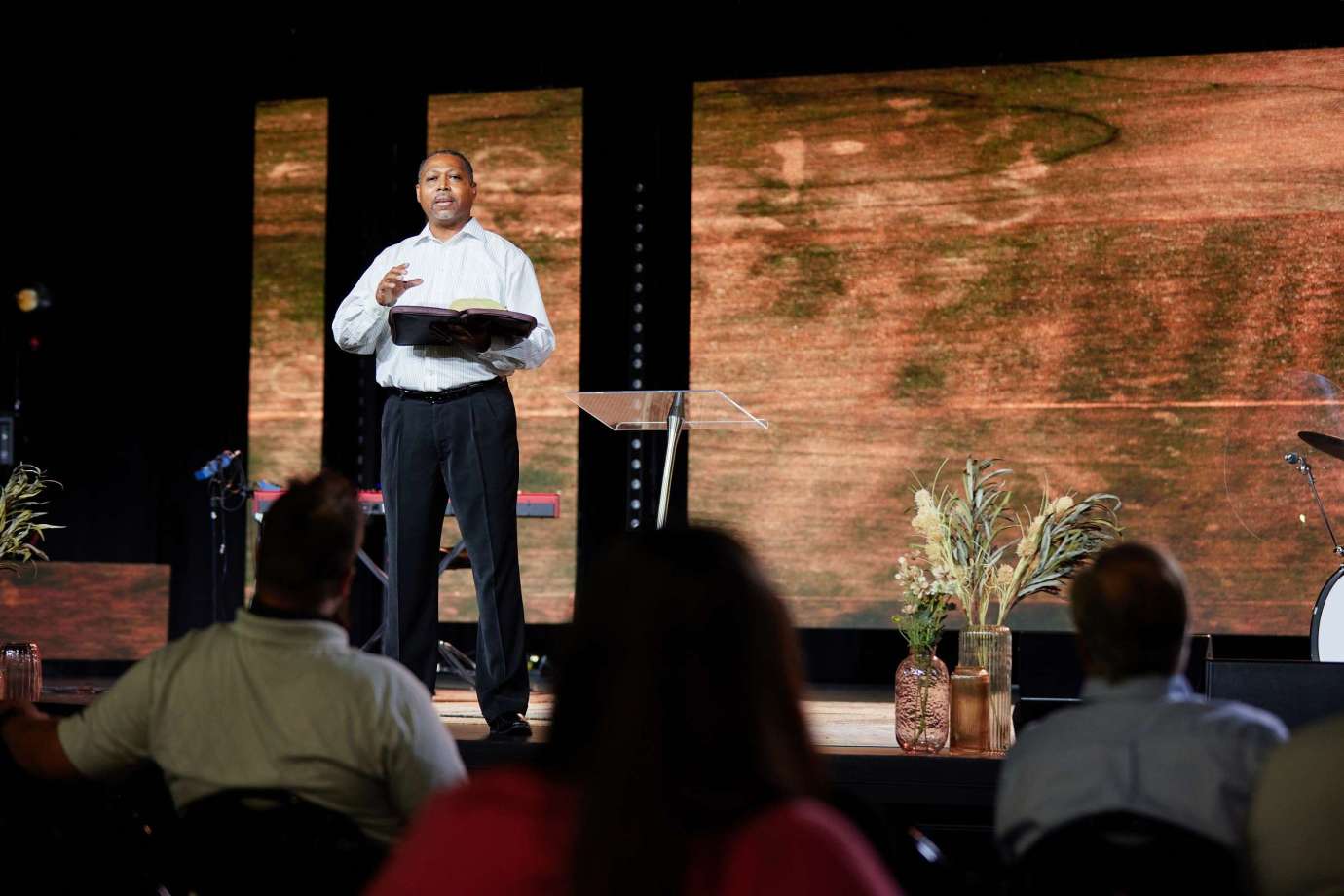HIST 705 Local History Research
Course Description
For information regarding prerequisites for this course, please refer to the Academic Course Catalog.
Course Guide
View this course’s outcomes, policies, schedule, and more.*
*The information contained in our Course Guides is provided as a sample. Specific course curriculum and requirements for each course are provided by individual instructors each semester. Students should not use Course Guides to find and complete assignments, class prerequisites, or order books.
Rationale
Public history extends the historian’s craft beyond the academy, emphasizing the preservation and interpretation of history for diverse audiences through museums, archives, digital platforms, and community events. As Christians, our approach to public history must reflect a commitment to truth, integrity, and a recognition of the divine narrative woven through history. This course equips the student with the tools to engage meaningfully with historical research, ethical preservation practices, and effective storytelling, integrating biblical principles into the professional practice of public history. By developing advanced research skills, creating accessible content, and exploring vocational opportunities, the student will be prepared to serve as a historian who inspires, educates, and contributes to the ongoing conversation about the past in ways that glorify God and benefit society.
Course Assignment
No details available.
After reading the Course Syllabus and Student Expectations, the student will complete the related checklist found in the Course Overview.
Discussions are collaborative learning experiences. Therefore, the student will submit a thread providing the link to their video for their Multimedia Presentation and Transcription Assignment. The student will then reply to 2 peers’ threads. Each reply should be at least 250 words and should provide feedback on the technical and content aspects of the video. (CLO: D)
Discussion: Integrating Faith and Public History – A Christian Perspective
Discussions are collaborative learning experiences. Therefore, the student will provide a thread in response to the provided prompt. The thread should be at least 450 words and should utilize at least 3 scholarly citations, one of which must be the Bible. The student will then post 2 replies of at least 250 words each. Each reply should utilize at least 1 scholarly citation and 1 biblical citation. All sources should be cited in current Turabian format. Any sources used, aside from the Bible, must have been published within the last 5 years.
Primary Source Proposal Assignment
This assignment is the first scaffolded assignment leading the student toward full completion of their Primary Source Assignment. The student will write a 100-200-word summary describing the objectives of their primary source research project. The summary should include the specific topic in local history that will be explored, the academic and public history goals of the research with description of alignment to the Primary Source Assignment, and the number and type of academic products to be produced for the final assignment. The assignment should follow current Turabian format, without the use of headings. The student can utilize the provided Turabian template for guidance on formatting. (CLO B).
For these assignments, the student will first complete the Public History Event: Selection Assignment and then complete the Public History Event: Reflection Assignment later in the course. Assignments should be uploaded into Canvas as Microsoft Word documents. The student may utilize the provided Turabian template and sample papers for guidance on formatting.
Public History Event: Selection Assignment
The student must identify a public history event to attend in person (the student may secure approval from the professor for an alternate virtual or recorded event if necessary). The student will provide a 150-200 word description of the event including the event title and type of event, the location and date of the event, a brief explanation of why the student chose the event and how it aligns with the course’s focus on public history, and a discussion on the anticipated historical themes or practices the student expects to observe.
Public History Event: Reflection Assignment
The student must attend the public history event listed in their Public History Event: Selection Assignment. Before then, during, or after the event, the student should talk with one of the organizers–or a public historian– asking how the event was envisioned and carried out to its culmination. (It is a great networking opportunity.) The student should then write a short summary of the event and then a reflection/analysis of the event. The student should then examine the organizer’s goals, method, and interests in the topic, and whether they (as a participating audience member) thought the goals were met. This is not merely a report of what was done at the event. It is a reflective analysis and assessment. (CLO: A)
For these assignments, the student will begin demonstrating their understanding of the difference between primary and secondary sources as they relate to their local history research project. For Preliminary Bibliography: Primary Sources Assignment, the student must provide 10 properly-cited primary sources related to their assignment. For Preliminary Bibliography: Secondary Sources Assignment, the student will need to provide 10 properly-cited secondary sources. Each citation entry for these assignments should include a 2-3-sentence summary explaining the source’s significance and how it supports the student’s research thesis. The bibliographies should follow current Turabian formatting (headings should not be included). These bibliographies should provide the foundation for the research and writing for the final assignment; it will be on-going, at least a few weeks. (CLO: C)
For this assignment, the student must choose 3 primary sources related to the research for their Primary Source Assignment. The primary sources can be local government records, political speeches, audio recordings, newspaper articles, wills, legal cases, diaries, personal correspondence, oral interviews, or any other source that provides an original understanding of the time being studied. After locating pertinent sources, the student will practice the historian’s task of transcription, editing, and annotating. The assignment should include the following sections: title of the source, embedded image or link, source description, transcription, and annotation. The student must embed at least a portion of each source either as an image or link. For the source description, the student should include what the source is, its origin/date/location, how and where the source was found, and any additional necessary details. The student should transcribe relevant portions of each source, ensuring accuracy in their transcribing. The annotation should provide historical context, explaining key individuals, events or places referenced in the source, how the source fits into broader historical themes, and any necessary clarifications for modern readers. Specific steps of the assignment are included in the instructions. (CLO: C)
The student will be able to customize this assignment to their interests. There are several ways that this assignment can be successfully accomplished. In general, the goal of this assignment is for the student to explore opportunities available within the field of public history. It is a broad discipline, so the student should narrow their analysis to 1 public history opportunity and demonstrate how this opportunity aligns with their career aspirations and contributes to their development as a historian. These opportunities could include employment prospects, grant opportunities, growth within the field of public history, etc. Additional suggestions are highlighted in the assignment instructions. There is no set length for this assignment. The assignment should adhere to current Turabian formatting. (CLO: A)
The student will create a quality, video presentation that can be used as course content in HIST 705. The goal is how to learn the best ways to present good content to the public. The video will explore 1 of the public history topics already covered during this course. The format of this presentation is flexible. The student may consider, but is not limited to a presentation that abides by the following formats: lecture, interview, guided tour, mini-documentary, etc. The video should be 10-12 minutes long, recorded at 1080p resolution or higher, and should be uploaded into YouTube as a public video or uploaded through Kaltura. The student will then provide a word for word transcript of the video. It is the student’s responsibility to film, edit, and transcribe this presentation and then upload it into YouTube as a public video or upload directly into Canvas through Kaltura. The student must upload both the YouTube/Kaltura link and their transcript to receive full credit. (CLO: D, E)
In order to accomplish the goals of this assignment, the student must use local archives to complete the assignment and use primary sources. The scope and type of the assignment, however, can be uniquely geared to the student’s interests. The student should research, in-person and online, what sources might be available to them. To successfully complete this assignment, the student must use at least 30 primary sources. However, the student does not have to write a singular project using all 30 sources. Instead, for example, the student could write 10 publication-quality encyclopedia articles with each of these using at least 3 primary sources. Another option is that the student could write 5 short biographies each, using an average of 6 of these sources, or the student could write 1 long paper on a local-historical event and then several shorter pieces on important individuals that interacted with the event. The assignment should follow current Turabian format and include a bibliography that divides primary and secondary sources. (CLO: B, C, E)

Have questions about this course or a program?
Speak to one of our admissions specialists.
Inner Navigation
Have questions?
